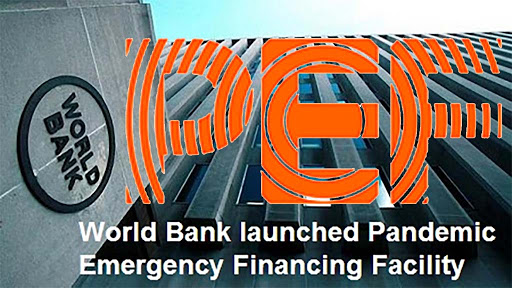The coronavirus (COVID-19) outbreak will likely trigger payouts for $132.5 mln in pandemic catastrophe bonds sponsored by the World Bank’s Pandemic Emergency Financing Facility (PEF) for eligible countries to mitigate the impact of the outbreak and might validate the need for market-based mechanisms to deal with the crisis, according to DBRS Morningstar.
The rating agency said that the PEF was established in 2017 by the World Bank’s International Bank for International Reconstruction and Development (IBRD), the International Development Association (IDA), the World Health Organisation (WHO) and other public- and private-sector partners to provide complementary funding for developing countries to cope with pandemics.
It followed the cross-border 2014–15 West African Ebola virus outbreak, which caused more than 11,000 deaths. This outbreak proved the need for an established funding mechanism to help prevent rare, high-severity disease outbreaks from becoming pandemics.
PEF funds can be used to finance the cost of response efforts during an outbreak. This includes, but is not limited to, the deployment of human resources, drugs and medicines, essential and critical lifesaving medical equipment and personal protective equipment, logistics and supply chain of critical supplies, non-medical equipment, minor civil works (e.g., setting up temporary attention centres), services, transportation, hazard payments, and communication and coordination.
DBRS Morningstar said that the PEF provides funding to eligible countries through a cash window and an insurance window. These windows are triggered in different ways and are specifically designed to complement each other.
To date, the PEF has paid out $61.4 mln from its cash windows to fight Ebola in the Democratic Republic of Congo, including $50 mln for the current tenth outbreak.
The insurance window provides coverage of up to $425 mln, composed of pandemic-risk-linked swaps for $105 mln and two classes of pandemic bonds for $320 mln in floating-rate catastrophe-linked capital at-risk notes issued in June 2017. Class A of these pandemic bonds totalled $225 mln while Class B totalled $95 mln.
Similar to other catastrophe-linked bonds in the market, investors could lose their principal if a set of parametric triggers, such as outbreak size, growth rate, and spread across borders, are met.
For an outbreak to become an eligible event under the terms of the IBRD’s pandemic bonds, it needs to meet a certain level of severity in terms of event duration, number of confirmed deaths, geographical spread, and growth rate.
Based on the most recent data published by the WHO, COVID-19 essentially meets the conditions to trigger the Class A Notes in terms of the number of fatalities and geographic spreads; however, the WHO dates the start of this outbreak on December 31, 2019, which means that the bonds will pay out on March 24, 2020 (the 12-week duration period).
The Class B Notes require fewer fatalities to be triggered (250) while the rest of the conditions are materially similar to those for the Class A Notes. The main difference is that, if all conditions are met, Class B investors would lose all principal ($90 mln) on March 24, 2020. At present, this would be the case for Class B investors, bringing the total amount available in the PEF to $132.5 mln; however, a larger coupon compensates for this higher risk associated with the Class B Notes.
DBRS Morningstar said that the IBRD-issued pandemic bonds amounting to $320 mln account for a small fraction of total catastrophe bonds, which are currently sized at $37 bln.
Although IBRD pandemic bonds were oversubscribed in 2017 at over 200%, there have been no other issuances of pandemic bonds since. Similar to other catastrophe bonds, defining parametric triggers is not an easy task and IBRD pandemic bonds are no exception.
“Although catastrophe bonds are mostly bought by sophisticated institutional investors, the convoluted definition of trigger events for the different types of pandemics covered might make pandemics bond valuation extremely difficult,” the rating agency said.
It added that the current coronavirus outbreak is showing that the valuation of pandemic bonds is highly correlated with the performance of global financial markets when it matters most. Pandemic bonds are designed to cover events whose impact is much more global by definition while traditional catastrophe bonds are designed to cover earthquakes or hurricanes, which tend to have a more geographically focalised impact, making them less correlated with the overall global market.










